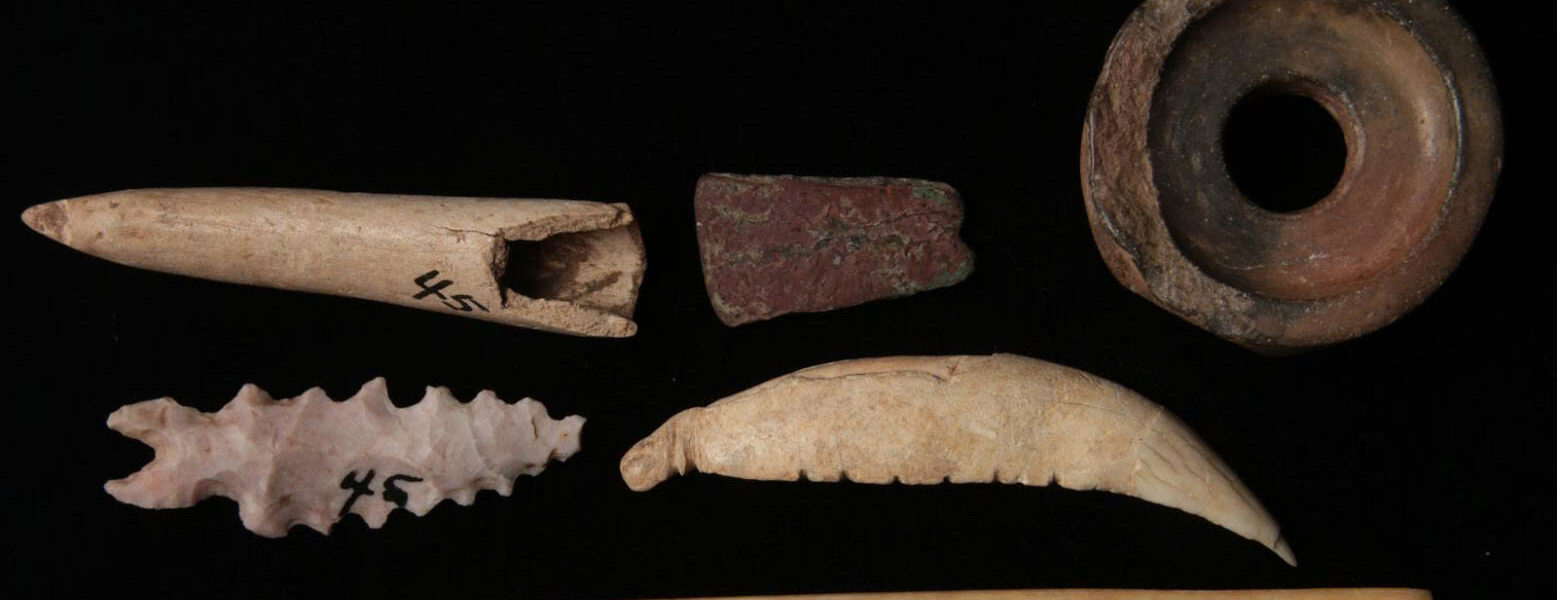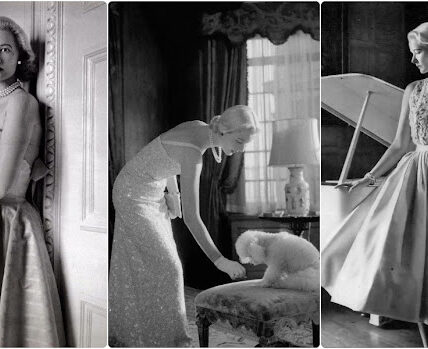Ceremonial Secrets: Unveiling the Artifacts of the Wakenda Phase
This captivating collection of six ancient artifacts offers a glimpse into the rich cultural heritage of the Wakenda phase, identified by renowned archaeologist Carl H. Chapman in his book The Archaeology of Missouri, II (1980). Each artifact was uncovered at the Miller site, located at the confluence of the Lamine and Missouri Rivers, a location Chapman and collector George Nichols recognized as a “True Hopewell village.” These objects, varying in size and function, reveal a deep history of craftsmanship and cultural significance within the Hopewell tradition.
Among the six objects in the image, the most striking is the flint eccentric point, which measures 6 inches long. This point, with its serrated edges, was likely used as a ceremonial or decorative object rather than a weapon, showcasing the intricate stonework skills of the Hopewell people. Next to it, the bone awl or needle was probably used in sewing or leatherworking, suggesting the community’s sophistication in crafting utilitarian tools.
Another rare and intriguing piece is the ear spool, a circular object thought to have been worn as a status symbol or jewelry. Ear spools were typically worn by individuals of high social rank, further highlighting the cultural richness of the Hopewell people.
The grooved and serrated tooth may have been part of a ceremonial costume or talisman, as similar teeth have been found in contexts related to shamanic practices. The presence of animal remains in ritual artifacts underscores the spiritual connection these communities had with nature.
A copper fragment is another fascinating find. Copper artifacts were highly valued by the Hopewell culture, often traded across vast distances. This particular piece may have been part of a larger ceremonial object, possibly related to their burial or mound-building practices.
Finally, an unknown hollow object, possibly part of a tool or ceremonial item, adds to the mystery of this collection, leaving room for further archaeological interpretation.
Together, these objects represent the complexity of Hopewellian life, where ceremonial and utilitarian items coexisted, highlighting a culture with deep spiritual and social structures. The detailed craftsmanship and variety of materials used illustrate their advanced skills in art and trade, connecting distant communities across North America.





